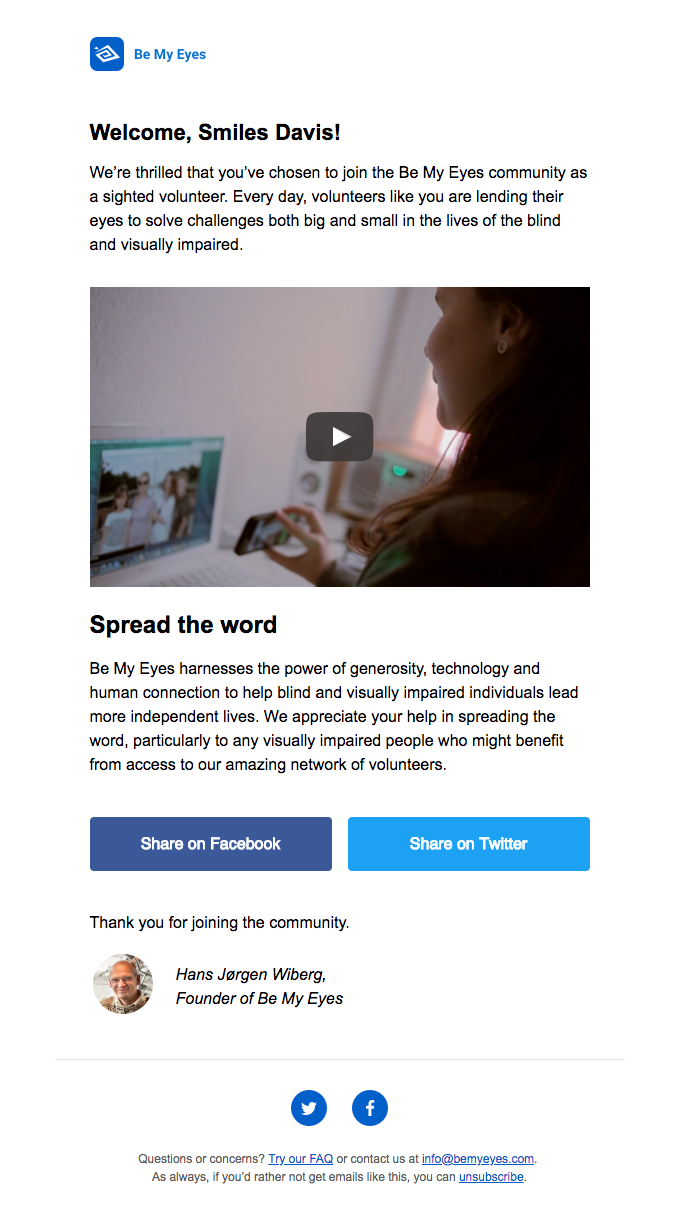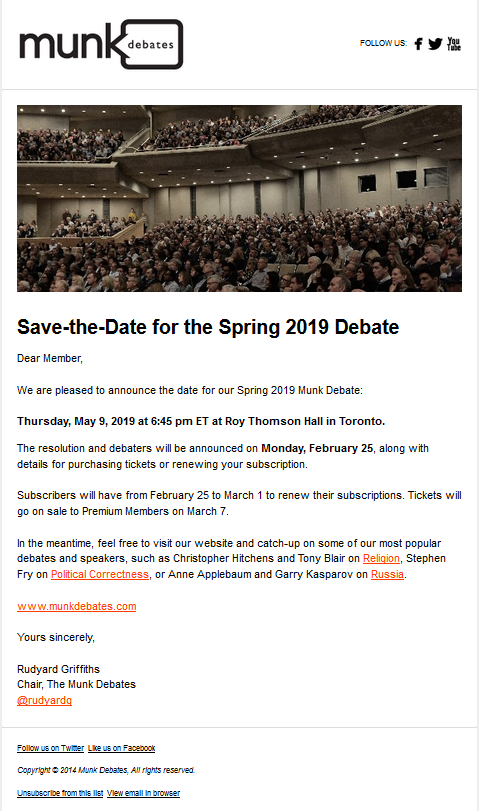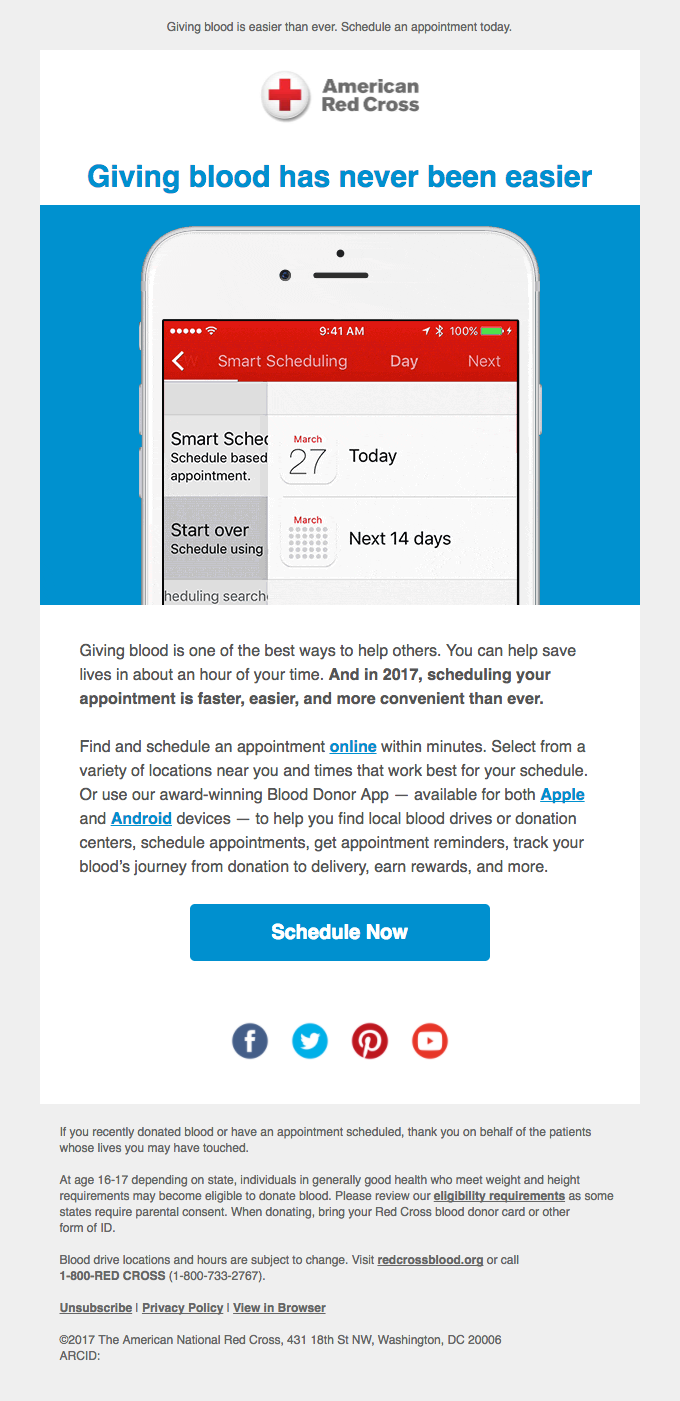From an outsider’s point of view, it may seem like marketers in a nonprofit organization have it easy—or at least easier. They have a loyal following, a pool of donors, and a consistent campaign.
However, the reality is that nonprofit marketers go through the same daily tasks of building a strong subscriber base, segmenting mailing lists, and finding the email content that works best for their customer segments. Like any marketer, nonprofits also find themselves buried in the nitty-gritty.
Nonprofits also have different goals from the usual company or entrepreneur, which is why traditional email marketing strategies can be tweaked or customized to fit their specific needs.
Thinking about how to execute your nonprofit email marketing campaign? We’ve listed some of the best email strategies around, along with a couple of sample emails from nonprofits themselves:
1. Personalize, segment and automate.
Personalization should be an automatic strategy for marketers. This is especially true for nonprofits, who need to let their donors, volunteers, and subscribers know that their concern and enthusiasm for the nonprofit’s cause is valued.
From things as simple as addressing supporters by their names to the more complex work of using marketing automation for the entire subscriber journey, personalization works wonders, increasing email open rates and driving higher conversions.
Marketing automation can help your nonprofit send the right emails to the right subscribers when their online activity meets a specific trigger. In the example below, it’s likely that a subscriber decided to level up and become a volunteer:

Source: Really Good Emails
2. Use email to bring your followers together.
From fundraising events to thanksgiving dinners, events form a huge part of the nonprofit life. Email marketing can do most of the event promotion, which can also help you:
- Re-engage old supporters and volunteers
- Translate website visits into event attendees
- Provide updates on your nonprofit activities
- Get fresh support through email referrals and forwards
Give your subscribers enough lead time to decide and prepare for the event. To excite them, insert a few links to some of the best events you have organized. Here’s an example from Munk Debates:

Source: Munk Debates
Don’t forget to send a post-event engagement email complete with photos from the event. Thank those who attended, donated, and volunteered, and let them know you’re looking forward to seeing them again soon.
3. Content matters.
Your email doesn’t have to contain blocks of text and an entire album of images. You can effectively deliver your message by simply using one or two high-quality photographs that show your work and its impact. Add a few compelling lines and a small benefit for your subscriber, and you’re set.
Nonprofit organization Me to We used a single photo to promote their new campaign, which doubles the impact of their usual call-to-action. Here’s how they did it:

Source: Really Good Emails
4. Show them how far you’ve come.
Always remember that your supporters want you to succeed. Your donors help fundraise because they believe in what you are capable of.
Be transparent about the challenges your nonprofit faces, the opportunities you receive, and the goals that you have already met. This way, your customers will know where they can be of help.
Check out the email below from Charity: Water. Using email marketing, they provided a summary of one of their major campaigns. Notice some of the important elements:
- Origin story: Tell them where your idea began, or how it all started.
- Milestones: Communicate how your supporters help make things happen. Use numbers if possible. Infographics are also a good idea.
- Progress made: Give your subscribers a mental picture of where you are and what you need to get to the next milestone. Focus on how much their help has propelled you forward.
- Global movement: Look at your calendar and see if there are any days that can highlight your cause even more. If you’re an education nonprofit, maybe you can send a call for donations on the International Day of Education. Charity: Water used #GivingTuesday to rally greater support from its subscribers.

Source: Really Good Emails
5. Make it educational.
For one or two weeks per month, take a break from donation emails and calls for volunteers. Instead, use your newsletter to provide a big-picture perspective of your cause and what other organizations and individuals are doing around it. Educated supporters are more likely to share your advocacy and bring their friends and family to join. Who knows? With more information, they might decide to be regular volunteers or even donors.

Source: Really Good Emails
6. Enhance the mobile experience.
Access is an advantage for nonprofits. By being a few taps away, mobile apps bring your cause closer to your supporters. It’s also an effective way of being creative with your initiatives. Use email marketing to show off the features of your mobile app, and how it strengthens the relationship between your nonprofit and its supporters, volunteers, and donors.
Aside from using a mobile app, make sure that your emails are readable on all mobile devices and platforms. Today’s supporters and donors are always on the go, and always on the lookout for opportunities. To know if your email is ready for mobile, ask yourself these questions:
- Is your subject short and catchy?
- Do you know the nonprofit buzzwords that lead to higher email opens?
- Does your preheader text fit within the allotted space across devices?
- Can your subscribers read the entire email without zooming in or out?

Source: Really Good Emails
Wrap up
As a nonprofit, you already have your solid advocacy to begin with. You also have people who are passionate about what you do. Leverage them.
The next steps are more mechanical: segmenting your mailing lists, personalizing your emails, and automating the entire subscriber journey. There are many platforms that can help you with these. And while you are at it, include a fully-featured mobile app.
Your followers know how much resources you have put into your cause, and will surely help you whenever they get the chance. Just don’t forget to thank them.



